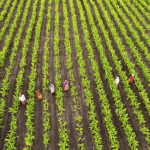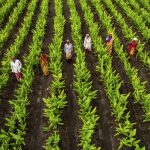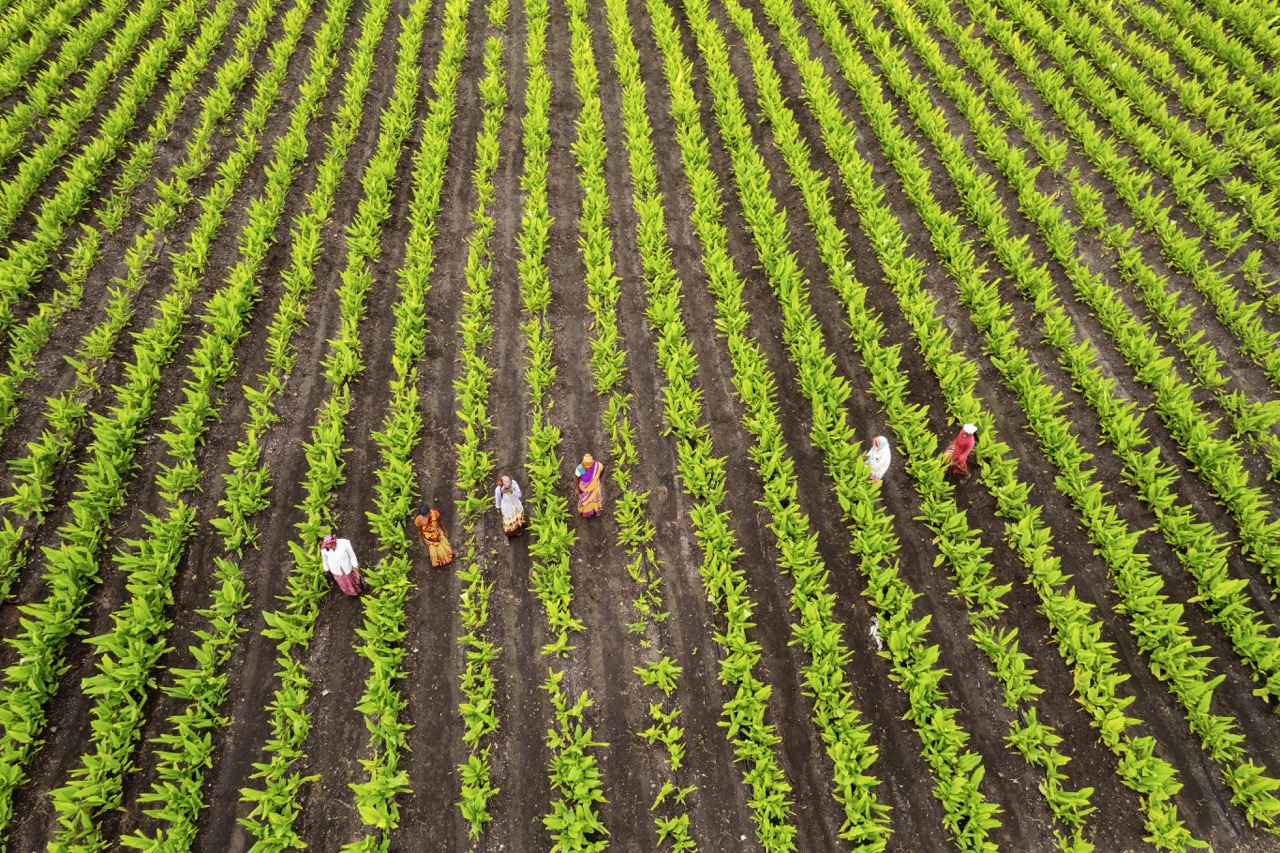As the world grapples with the dual challenges of a growing population and environmental sustainability, the agricultural sector is undergoing a significant transformation. Smart farming, an innovative approach that leverages technology to enhance agricultural productivity and efficiency, is on the rise. By integrating the latest advancements in data analytics, robotics, and automation, smart farming represents a new frontier in food production. This article explores the essentials of smart farming, the technologies driving its adoption, the economic implications for farmers, and its potential impact on sustainable food practices.
Understanding Smart Farming: Technology’s New Frontier
Smart farming refers to the use of advanced technology, including sensors, GPS, drones, and IoT (Internet of Things) devices, to optimize crop yields and resource use. At its core, smart farming aims to create a more connected and efficient agricultural ecosystem. By collecting real-time data on soil health, weather patterns, and crop conditions, farmers can make informed decisions that lead to increased productivity and reduced waste. This paradigm shift not only enhances traditional farming methods but also opens up exciting new possibilities for future agricultural practices.
The implementation of smart farming technologies requires significant investment in infrastructure and training for farmers. As agricultural practices evolve, there is a growing need for education and support to help farmers adapt to these new tools. This transition is essential for maximizing the potential benefits of smart farming, ensuring that producers are equipped to leverage technology effectively. Consequently, agricultural institutions and governments are increasingly focusing on providing resources to facilitate this transformation.
Moreover, smart farming is characterized by its data-driven approach, which allows for precision agriculture. Farmers can utilize data analytics to monitor crops at a granular level, identifying specific areas that require intervention. This method not only reduces the use of chemical fertilizers and pesticides but also enhances soil health and biodiversity. As technology continues to advance, the capabilities of smart farming will expand, paving the way for more sustainable practices in agriculture.
Key Innovations Driving the Smart Farming Revolution
Several key innovations are at the forefront of the smart farming revolution. One of the most notable is the use of drones for aerial monitoring of crops. Drones equipped with high-resolution cameras and sensors can capture detailed images of fields, allowing farmers to assess crop health, identify pests, and monitor irrigation needs with remarkable accuracy. This real-time data enables farmers to take timely actions, ultimately leading to improved yields and reduced input costs.
Another significant innovation is the use of precision irrigation systems. These systems utilize IoT devices to monitor soil moisture levels and weather conditions, ensuring that crops receive the exact amount of water they need. This targeted approach not only conserves water resources but also enhances crop resilience during periods of drought or heavy rainfall. As water scarcity becomes an increasingly pressing issue globally, precision irrigation represents a crucial advancement in sustainable farming.
Finally, the integration of artificial intelligence (AI) and machine learning into farming practices is revolutionizing decision-making processes. AI algorithms can analyze vast amounts of data, predicting trends and potential outcomes based on historical patterns. By harnessing the power of AI, farmers can optimize planting schedules, manage labor resources more efficiently, and even forecast market demand. These innovations collectively contribute to a smarter, more resilient agricultural sector poised to meet the challenges of the future.
Economic Impacts: Benefits and Challenges for Farmers
The adoption of smart farming technologies presents a mixed bag of economic impacts for farmers. On the one hand, the ability to optimize resource use and improve crop yields can lead to significant cost savings and increased profitability. Farmers employing smart farming techniques often report improved efficiency, reduced labor costs, and enhanced product quality, all of which contribute to better financial outcomes. Moreover, the ability to access and analyze data enables farmers to make more informed decisions, reducing risks associated with market fluctuations and changing environmental conditions.
However, the transition to smart farming is not without its challenges. The initial investment in technology can be substantial, particularly for small and medium-sized farms that may struggle to secure funding. Furthermore, the rapid pace of technological advancement can create a knowledge gap, as farmers may find it difficult to keep up with the latest tools and best practices. This situation can lead to a digital divide within the agricultural sector, where larger farms benefit disproportionately from technological innovations while smaller farms lag behind.
Additionally, the reliance on technology raises concerns about data privacy and ownership. As farmers increasingly collect and share data, questions arise regarding who owns that data and how it can be used. Establishing clear guidelines and protections will be essential to ensure that farmers retain control over their information and can benefit from the insights generated by smart farming technologies. Addressing these challenges will be crucial to unlocking the full potential of smart farming for all stakeholders in the agricultural ecosystem.
The Future of Food: Sustainable Practices and Smart Tech
Smart farming embodies the potential for sustainable agricultural practices that can help safeguard the future of food production. By utilizing technology to minimize resource waste and environmental impact, farmers can make strides toward achieving sustainability goals. For instance, precision agriculture techniques reduce the overuse of fertilizers and pesticides, contributing to healthier ecosystems and mitigating pollution. This focus on sustainability is crucial as consumers increasingly demand transparency and responsibility in food production.
The integration of smart farming practices also aligns with global initiatives aimed at addressing climate change and food security. As countries strive to meet sustainability targets, the adoption of technology-driven agriculture can play a significant role in lowering greenhouse gas emissions and enhancing the resilience of food systems. By adopting practices that prioritize both productivity and environmental stewardship, the agricultural sector can contribute to a more sustainable future.
Looking ahead, the future of food is poised for transformation as smart farming continues to evolve. By fostering collaboration among technology developers, farmers, and policymakers, we can create an ecosystem that supports innovation and sustainability. The marriage of technology and agriculture will not only enhance food production but also ensure that it is done responsibly, paving the way for a more secure and sustainable food supply for generations to come.
The rise of smart farming marks a pivotal moment in the agricultural landscape, presenting both opportunities and challenges for farmers and the global food system. As technology continues to advance, its integration into farming practices holds the promise of enhanced productivity, sustainability, and resilience. By understanding the innovations driving this revolution and addressing the economic implications, stakeholders can work together to create a more sustainable agricultural future that meets the demands of a growing population while protecting the planet. As we embrace this new frontier in agriculture, the question remains: how can we best harness smart farming to benefit not only farmers but also the consumers and ecosystems that depend on it?










